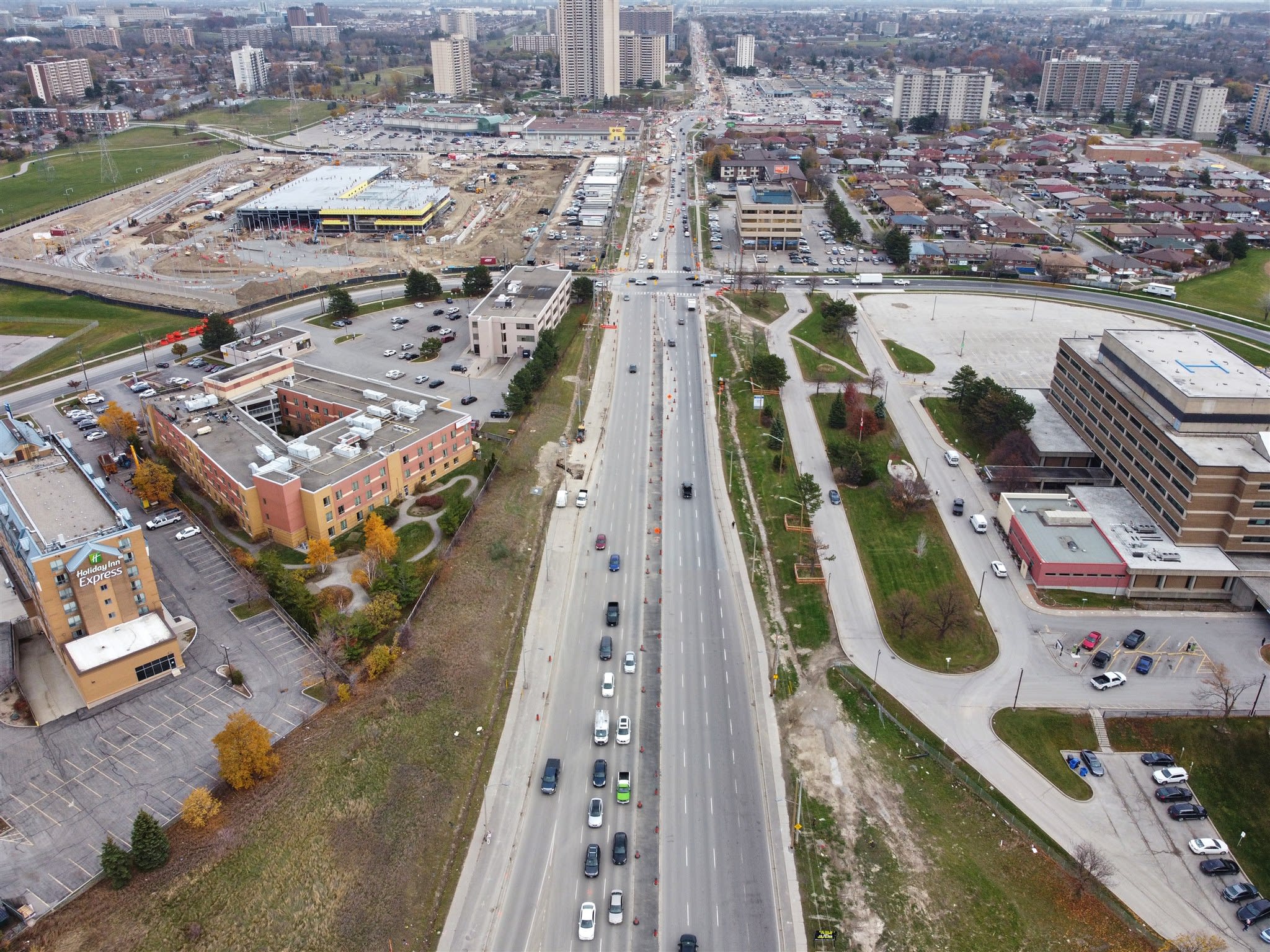Metrolinx warns against flying UAVs over GO & UP Express routes
Drone operators can face heavy fines and risk criminal charges for flying drones above tracks.
Dec 24, 2020
Metrolinx and GO Transit say they’re keeping a keen eye out for drone operators this holiday season – and warn anyone who illegally flies them over train tracks will be fined and charged.
The alert comes after several recent incidents involving unmanned aerial vehicles (UAVs) being flown over rail corridors, and in some cases directly above trains with customers onboard.
“We fully investigate and take these kinds of incidents very seriously,” said Inspector Randy Cowan of the Metrolinx Transit Safety Investigations and Intelligence team.
An officially approved drone image taken above the Rutherford GO Station’s new parking garage. (Metrolinx photo)
People may not be aware, but the area above GO tracks is restricted airspace and it’s illegal to fly any type of drone – commercial or consumer – over the rail lines.
Cowan explains that for the past few years, reports of drone activity have increased after the holidays. His team believes this is likely the result of people trying out their new high-tech gifts.
“Drones can create dangerous distractions for our crews, and they also have the ability to cause significant damage to transportation infrastructure,” Cowan said.
He also noted that many drones have green and red lights used by operators to see them better at night – but those are the same colours used in rail signalling systems, which could cause dangerous confusion for crews.
According to Cowan, anyone who is caught flying a drone over an active rail corridor could be fined up to $10,000 as well as potentially facing serious criminal charges, including mischief endangering life.
Lorne Kinsella is the Creative Director for Metrolinx Marketing department. He says to safely and legally fly a drone over an active rail corridor: “Actually requires permissions from about a dozen regulatory and security offices.”
By the pure nature of his job, Kinsella sees hundreds of pictures of trains every week.
“I get the appeal of drone photography,” he said. “They’re more affordable than ever before and drones are able to provide compelling perspectives we’re not used to seeing.”
But Kinsella adds that without the proper training and permissions you could be putting people’s lives at risk.
Earlier this year, Metrolinx posted a guide about how to take photos of GO Transit and UP Express safely.
Transport Canada also has a website dedicated to drones and how people can make sure they’re flying safely and legally.
“We love seeing pictures from our customers, rail fans and transit enthusiasts posted on Instagram and social media,” Kinsella said. “That said, safety for our customers, crews and the community is our top priority and we don’t want anyone taking unnecessary risks.”
Kinsella adds there are a few safe places to safely and legally operate a drone while still getting great shots of GO trains. For example, there are many areas around Rouge Hill station that allow drone operators to fly their drones a safe and legal distance from the tracks over Lake Ontario, while still being able to see Lakeshore East GO trains.
Metrolinx is also asking members of the pubic if they see something, say something; anyone who spots a drone flying over a rail corridor is being asked to immediately call the 24-hour GO Transit Safety Dispatch number: 1-877-297-0642.
by Matt Llewellyn Spokesperson
